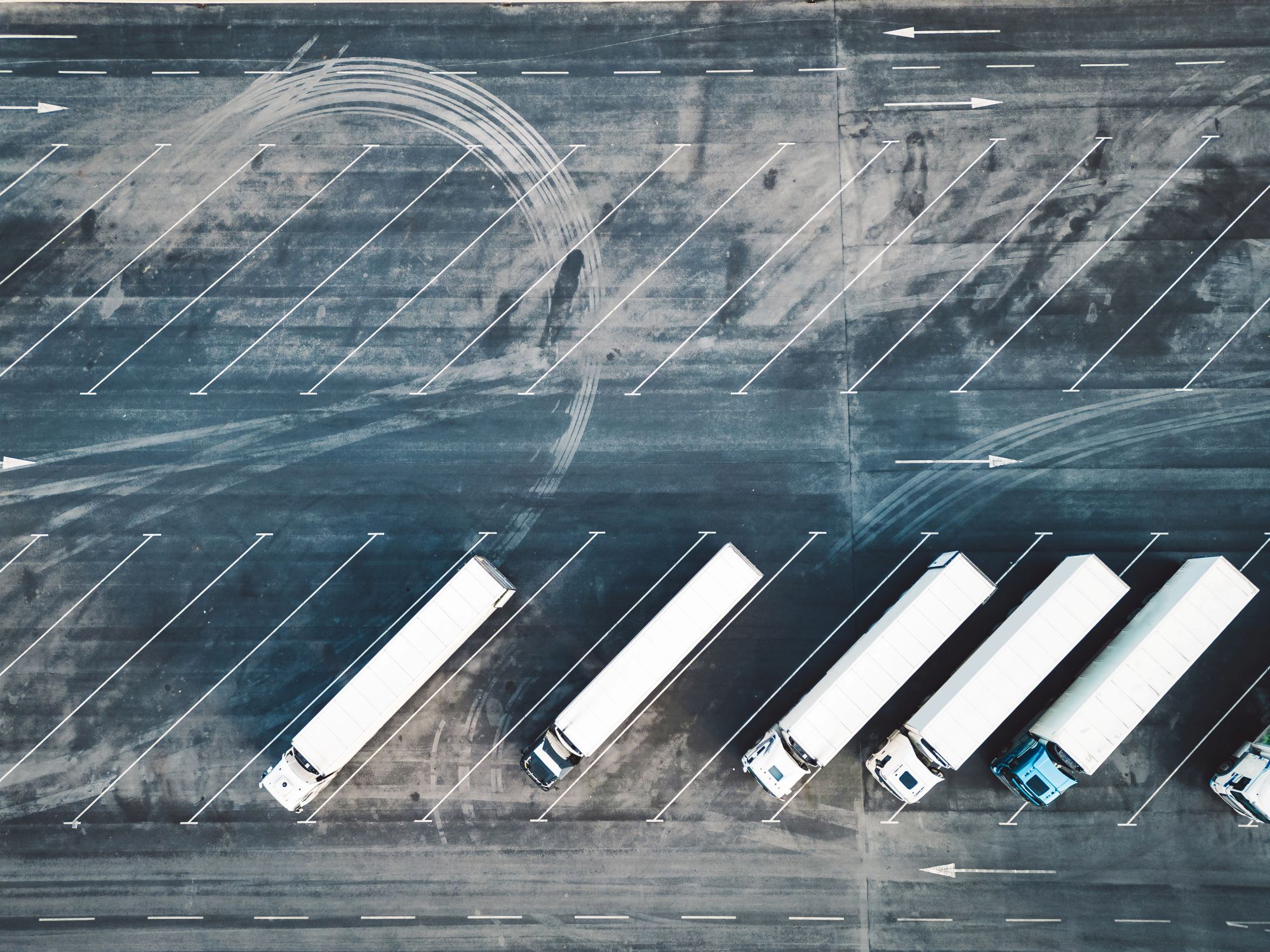
Guest
Zonas de bajas emisiones en España: Lo que deben saber los operadores de flotas
Creado: 03/10/2025
•
Actualizado: 08/10/2025
A finales de 2025, 149 ciudades españolas -desde Madrid y Barcelona hasta centros turísticos como Valencia, Alicante y Benidorm- restringirán el acceso a los vehículos de altas emisiones. Para los operadores de flotas, esto significa nuevos riesgos de cumplimiento, costosas actualizaciones y plazos de entrega más ajustados.
Las Zonas de Bajas Emisiones (ZBE) forman parte de una iniciativa europea más amplia para mejorar la calidad del aire y reducir las emisiones del transporte. Ya funcionan en las principales ciudades del país y se aplican con multas de hasta 200 euros, aunque las normas varían de una ciudad a otra.
En esta guía, explicamos cómo funcionan las ZBE, qué categorías de vehículos se ven afectadas y qué deben hacer los operadores para mantener sus flotas en la carretera.
Normas ZBE y categorías de vehículos
La legislación española introduce las ZBE en las ciudades de más de 50.000 habitantes (y en las de más de 20.000 con una calidad del aire especialmente mala), con el fin de mejorar la calidad del aire urbano y apoyar los objetivos climáticos de la UE.
El acceso a una ZBE viene determinado por el distintivo ambiental del vehículo, expedido por la Dirección General de Tráfico (DGT).
Las categorías son:
Cero (distintivo azul):
Acceso total
● Vehículos 100% eléctricos (BEV)
● Vehículos de pila de combustible de hidrógeno (FCEV)
● Híbridos enchufables con al menos 40 km de autonomía eléctrica
Eco (distintivo verde/azul):
Acceso generalmente libre
● Híbridos estándar (HEV)
● Híbridos enchufables con menos de 40 km de autonomía eléctrica
● Vehículos de gas (GNC/GNL/GLP)
C (Distintivo verde):
Acceso con algunas restricciones de tiempo/área
● Vehículos de gasolina: Euro 4/5/6 (normalmente a partir de 2006).
● Vehículos diésel: Euro 6 (normalmente a partir de 2014)
B (Distintivo amarillo):
Cada vez más restringido, a menudo prohibido durante las horas punta
● Vehículos de gasolina: Euro 3 (normalmente 2000-2005)
● Vehículos diésel: Euro 4-5 (normalmente 2006-2013)
Sin insignia:
Generalmente prohibido en todos los ZBE
● Vehículos de gasolina por debajo de la norma Euro 3
● Vehículos diésel por debajo de la norma Euro 4
Los vehículos de gasolina por debajo de la norma Euro 3 y los diésel por debajo de la Euro 4 suelen estar prohibidos en las ZBE, aunque las restricciones varían según la ciudad.
Es importante tener en cuenta que los vehículos extranjeros deben matricularse en los ayuntamientos locales antes de entrar en una ZBE, aunque cumplan normas Euro equivalentes. Sin matricular, los vehículos que cumplan las normas pueden enfrentarse a multas automáticas, lo que se ha convertido en un problema habitual para los transportistas internacionales que operan en España.

Zonas afectadas por las ZBE
Madrid y Barcelona cuentan con ZBE desde hace varios años, con normas muy específicas y amplias zonas de cobertura. A finales de 2025, el sistema se ampliará para cubrir 149 ciudades, incluidas poblaciones más pequeñas y destinos turísticos como Benidorm, Valencia, Sevilla y Alicante.
Algunas ciudades aún están implantando o aplicando gradualmente sus zonas, con periodos transitorios (por ejemplo, avisos hasta finales de 2025 en Valencia y Benidorm). Otras, como Málaga, empezarán a multar a los vehículos que incumplan la normativa a partir de diciembre de 2025.
Debe tenerse en cuenta que las ciudades pueden tener normas diferentes, y algunas permiten vehículos no conformes para servicios esenciales, por lo que es importante conocer las normas de una ciudad específica antes de enviar un vehículo.
España no está sola: más de 320 ciudades de toda Europa ahora operan LEZ, con el sistema Crit'Air de Francia, Umweltzonen de Alemania y ULEZ del Reino Unido entre los más establecidos. Para los transportistas transfronterizos, esto crea un mosaico de normas, pegatinas y sanciones que aumentan los riesgos de cumplimiento y los costes.
Qué deben hacer los operadores de flotas
Debe asegurarse de que sus vehículos llevan el distintivo o la matrícula de la DGT correspondiente si son extranjeros.
Las multas por incumplimiento suelen fijarse en 200 euros por infracción, aunque pueden variar según el municipio. Ciudades como Madrid y Barcelona ya han empezado a imponer estas sanciones mediante sistemas de reconocimiento automático de matrículas (ANPR).
Problemas para los gestores de flotas
Renovación y costes de la flota
Muchas empresas de logística se enfrentan a obstáculos porque los camiones diésel más antiguos están ahora prohibidos o restringidos en las ciudades. De hecho, la edad media de la flota española de transporte de mercancías es de 14 años. Esto significa que un número significativo de vehículos no cumplen la normativa y deben ser sustituidos si los transportistas quieren entrar en las ZBE.
Los precios de los vehículos aumentan la presión: un camión pesado eléctrico puede costar tres veces más que su equivalente diésel, mientras que los camiones de hidrógeno son aún más caros.
CETM-Madrid, la Confederación Española de Transporte de Mercancías, estima que los desembolsos acumulados por las [empresas] madrileñas de transporte de mercancías por carretera rondan los 1.300 millones de euros (https://transporteprofesional.es/ultimas-noticias/cetm-madrid-reclama-modificar-el-calendario-de-acceso-a-las-zonas-de-bajas-emisiones-a-los-camiones) y reclama ajustes de plazos y más ayudas.
Compresión del tiempo
Los datos muestran que los cambios están repercutiendo en los plazos de entrega. Una encuesta reciente entre empresas situadas en zonas piloto reveló que [el 36,7% informaba de plazos de entrega más largos y de un aumento de los gastos de envío] (https://www.jiem.org/index.php/jiem/article/download/6902/1089).
La congestión también es habitual durante las horas de reparto restringido (8-10 de la mañana), cuando muchos operadores compiten por el acceso. Alrededor del 83% de las empresas encuestadas también mencionaron la falta de zonas de carga y descarga adecuadas como uno de los principales motivos de los retrasos.
Este efecto de "compresión del tiempo" -en el que las entregas se ven forzadas a realizarse en menos horas- crea cuellos de botella en los perímetros de las zonas, lo que aumenta la probabilidad de que se produzcan retrasos en las llegadas y se interrumpan las cadenas de suministro.
Presiones de personal
La alteración de los horarios va más allá de la ruta de los vehículos y afecta a la gestión del personal. El planteamiento de Barcelona respecto a las ZBE ilustra el reto: la ciudad ofrece franjas horarias de reparto nocturno de dos horas (21:00-07:00) para reducir la congestión diurna, pero los convenios laborales españoles establecen que la remuneración del trabajo nocturno tiene primas de aproximadamente el 25%.
Esto plantea una difícil elección a los operadores de flotas: aceptar la congestión y los retrasos diurnos, o absorber el aumento de los costes laborales de las operaciones nocturnas.
Las ventajas medioambientales de introducir ZBE
A pesar de los retos, las ZBE aportan claros beneficios para la salud pública. Los estudios de la LEZ Madrid Central registraron reducciones significativas de dióxido de nitrógeno (NO₂) dentro de la zona. Estudios europeos más amplios muestran que las emisiones de hollín disminuyen hasta en un 47% y las partículas ultrafinas en un 56% tras la implantación de ZBE.
Estas reducciones se traducen directamente en una mejor calidad del aire, menos enfermedades respiratorias y menos ingresos hospitalarios. Para los residentes urbanos - y los conductores que pasan horas en el tráfico congestionado - los beneficios para la salud son tangibles aunque incómodos.
Apoyo a conductores y operadores de toda Europa
"Las zonas de bajas emisiones están aquí para quedarse", comenta Raqual Martínez, Director de Ventas para Europa de SNAP. "El reto para nuestra comunidad es adaptarse sin comprometer la eficiencia ni el bienestar de los conductores. En SNAP, estamos comprometidos a apoyar a las flotas en España y en toda Europa, ayudándoles a convertir el cambio normativo en una ventaja operativa."
Aunque no podemos cambiar las normas de la LEZ, nuestra aplicación intruck simplifica la vida en la carretera. Los conductores pueden utilizarla para encontrar y reservar aparcamiento y lavado seguros para camiones, ver qué instalaciones hay disponibles en cada parada y planificar descansos que se ajusten a plazos de entrega más ajustados, tanto si se dirigen a Madrid, bordean Barcelona o cruzan fronteras en rutas más largas.
Descargue hoy mismo la aplicación intruck app para realizar operaciones más fluidas en el cambiante panorama del transporte en España.



